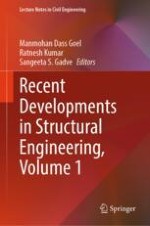2024 | OriginalPaper | Buchkapitel
A Comparative Study of AdaBoost and K-Nearest Neighbor Regressors for the Prediction of Compressive Strength of Ultra-High Performance Concrete
verfasst von : Rakesh Kumar, Baboo Rai, Pijush Samui
Erschienen in: Recent Developments in Structural Engineering, Volume 1
Verlag: Springer Nature Singapore
Aktivieren Sie unsere intelligente Suche, um passende Fachinhalte oder Patente zu finden.
Wählen Sie Textabschnitte aus um mit Künstlicher Intelligenz passenden Patente zu finden. powered by
Markieren Sie Textabschnitte, um KI-gestützt weitere passende Inhalte zu finden. powered by
